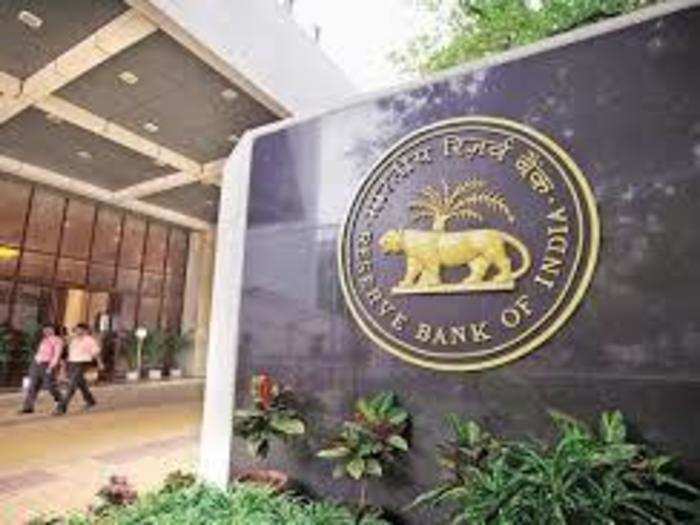- Home
- slideshows
- strategy
- Here are the major takeaways from Aon Hewitt’s 21st India Annual Salary Increase Survey
Here are the major takeaways from Aon Hewitt’s 21st India Annual Salary Increase Survey
Banking

Investment Banking

Investment Banking & Capital Markets trends in India remained strong in 2016 despite slowdown globally and in Asia. Overall it was a year of higher M&A activity, buoyant IPOs and nervous FIIs. The outbound deals picked up impressively in 2016, and a lot of activity in start-ups was seen. Key sectors that saw outbound activity were Energy & Oil, while Hi-Tech attracted majority of inbound activity. A relatively stable top management of domestic houses ensured business stickiness and top slots of league tables were replaced by these firms. IPOs were up significantly, while QIPs disappointed yet another year.
From an HR standpoint, Promotions were marginally up, increases and bonuses were flat. The industry pyramid saw a burgeoning bottom layer on account of fresh hiring. From Equities Markets standpoint, the dwindling margins in Cash Equity Trading for MNCs resulted few ramp-downs and thus change in Equities talent landscape. The global economic anxiety, weak Sensex performance resulted into FII volatility & pullouts, and we saw FII pullouts even from Debt market driven by hike in US Fed Rates. Sensex volatility however resulted into higher Trading Volumes and positive trend was seen in promotions and pay increases for Equities Research / Sales & Trading talent base.
Overall, Bulge firms continued to lead the pay levels and bonuses were highest for Investment Banking compared to Equity or Fixed Income talent base.
From an HR standpoint, Promotions were marginally up, increases and bonuses were flat. The industry pyramid saw a burgeoning bottom layer on account of fresh hiring. From Equities Markets standpoint, the dwindling margins in Cash Equity Trading for MNCs resulted few ramp-downs and thus change in Equities talent landscape. The global economic anxiety, weak Sensex performance resulted into FII volatility & pullouts, and we saw FII pullouts even from Debt market driven by hike in US Fed Rates. Sensex volatility however resulted into higher Trading Volumes and positive trend was seen in promotions and pay increases for Equities Research / Sales & Trading talent base.
Overall, Bulge firms continued to lead the pay levels and bonuses were highest for Investment Banking compared to Equity or Fixed Income talent base.
General Insurance

India continues to be one of the most under insured countries in the world as indicated by both penetration and density levels.
Despite the penetration levels, general insurance as a sector has experienced exponential growth over the years with a cumulative growth rate (CAGR) of 14% to 15% since the beginning of the decade. The industry continues to expand, with smaller general insurance players registering a faster growth as compared to more established players in the recent past. Liberalization of FDI in the insurance space has also promised to open doors for much needed capital infusion.
Private sector insurers contribute significantly to the pie, accounting for approximately 49% of market share. The growth of the private sector in 2016 was 21% as compared to 7% for public sector insurers. Consolidation in the sector continues with the top 4 players in the sector accounting for over 50% of the market share.
The positive headwinds and the buoyant growth reflect in the salary increases rolled out in the sector as well. The projections for 2017 stand at 10.3% as compared to 10.4% in 2016. Attrition however continues to remains a key challenge in the General Insurance space with attrition rates for 2016 registering at 20.1%, only marginally lower than the attrition rate for the previous year (21.6%).
Despite the penetration levels, general insurance as a sector has experienced exponential growth over the years with a cumulative growth rate (CAGR) of 14% to 15% since the beginning of the decade. The industry continues to expand, with smaller general insurance players registering a faster growth as compared to more established players in the recent past. Liberalization of FDI in the insurance space has also promised to open doors for much needed capital infusion.
Private sector insurers contribute significantly to the pie, accounting for approximately 49% of market share. The growth of the private sector in 2016 was 21% as compared to 7% for public sector insurers. Consolidation in the sector continues with the top 4 players in the sector accounting for over 50% of the market share.
The positive headwinds and the buoyant growth reflect in the salary increases rolled out in the sector as well. The projections for 2017 stand at 10.3% as compared to 10.4% in 2016. Attrition however continues to remains a key challenge in the General Insurance space with attrition rates for 2016 registering at 20.1%, only marginally lower than the attrition rate for the previous year (21.6%).
Microfinance

It’s been a year of ups and downs for the micro-finance industry. With some MFIs commencing their small finance bank business, the industry has also shown signs of overheating with around 1.26 million microfinance borrowers with top-up loans have an average loan exposure of INR 45,400, much higher than the national average of INR 22,000.
However, the biggest impact to the industry has been in the form of deferred payments from borrowers on account of Demonetization. The industry’s PAR has increased significantly due to lack of cash in the hands of its borrowers. Despite a stressed quarter largely on account of demonetization, the industry promises a positive outlook with quick recovery in the short term.
Given the economic conditions and deferred cash flow, the industry may see conservative annual increments & bonus payouts at the end of this financial year. While the 2016 actual average increment stood at 10.8%, the annual salary increase may fall down to 7.1% (projected).
Top Executives / Senior Management may see an even sharper drop in increments with projected annual increment for Senior Management coming down to the tune of 5.4%.
Overall attrition in the industry has also gone up; the industry projects an attrition rate of around 29.2% by end of this financial year.
However, the biggest impact to the industry has been in the form of deferred payments from borrowers on account of Demonetization. The industry’s PAR has increased significantly due to lack of cash in the hands of its borrowers. Despite a stressed quarter largely on account of demonetization, the industry promises a positive outlook with quick recovery in the short term.
Given the economic conditions and deferred cash flow, the industry may see conservative annual increments & bonus payouts at the end of this financial year. While the 2016 actual average increment stood at 10.8%, the annual salary increase may fall down to 7.1% (projected).
Top Executives / Senior Management may see an even sharper drop in increments with projected annual increment for Senior Management coming down to the tune of 5.4%.
Overall attrition in the industry has also gone up; the industry projects an attrition rate of around 29.2% by end of this financial year.
Asset Management

With lower bank interest rates and demonetization, the average assets under management (AUM) of the Indian mutual fund industry crossed 17 lakh CR December 31, 2016. Assets managed by the Indian mutual fund industry have grown from INR 13.49 lakh CR in December 2015 to INR 17.06 lakh CR in December 2016 – a 26% growth in assets over the last year.
Although retail continues to contribute to a significant share in the pie, Institutional Assets grew at a faster rate in 2015-16 as compared to Retail Assets.
The overall growth seen in Retail Assets was approximately 13.74% as compared to 18.26% for Institutional Assets – contrary to the trends seen in the previous years. Consolidation continues in this sector, with most of the top 10 mutual funds seeing a growth in AUM as compared to the previous year.
In addition, there have been 7 exits in the space in the past 4 years. This has led to relatively easy talent availability within the Mutual Fund space and has also influenced hiring costs.
The salary increments and forecast for this sector have additionally been influenced by Bank backed AMCs saw salary increments moving in line with the parent entity in 2016. Investment teams continue to draw a significant pay premium along with risk, compliance and analytics.
The talent landscape is seeing an increased focus on hiring, training and retaining key talent in niche roles such as relationship management, digital marketing and training the front-line sales force.
Asset Management continues to differentiate strongly on talent with the between average and high performers with the multiplier being 1.84x in 2016.
Although retail continues to contribute to a significant share in the pie, Institutional Assets grew at a faster rate in 2015-16 as compared to Retail Assets.
The overall growth seen in Retail Assets was approximately 13.74% as compared to 18.26% for Institutional Assets – contrary to the trends seen in the previous years. Consolidation continues in this sector, with most of the top 10 mutual funds seeing a growth in AUM as compared to the previous year.
In addition, there have been 7 exits in the space in the past 4 years. This has led to relatively easy talent availability within the Mutual Fund space and has also influenced hiring costs.
The salary increments and forecast for this sector have additionally been influenced by Bank backed AMCs saw salary increments moving in line with the parent entity in 2016. Investment teams continue to draw a significant pay premium along with risk, compliance and analytics.
The talent landscape is seeing an increased focus on hiring, training and retaining key talent in niche roles such as relationship management, digital marketing and training the front-line sales force.
Asset Management continues to differentiate strongly on talent with the between average and high performers with the multiplier being 1.84x in 2016.
Life Insurance

2016 saw the Life Insurance industry focus towards expanding customer reach through alternate channels, increase number of partnerships on account of open architecture and driving synergies across businesses to control operating expenses.
While Agency model still continues to drive New Business Premiums (NBP) across the industry, the fixed cost heavy life-agent model still needs to be fixed. Bancassurance as a channel has contributed significantly to NBP growth across Tier-1 Firms. Alongside, a number of below-the-line campaigns & partnerships has been a key differentiator for Direct Sales channel. Customer Analytics & dedicated campaigns towards improving UI / UX have played a significant role in e-sales fulfillment. Lately, some of the Life Insurance players have also started to look at Insurance Marketing Firms as a lever of growth. As a combined effect of open architecture, increased FDI limits and high operating costs, the industry today is also headed towards consolidation in order to drive synergies across the organization. On the Talent front, the industry has seen slightly conservative annual increments & bonus payouts. While the 2016 actual average increment stands at 8.3%, the projected annual salary increase for 2017 is 8.2%. The industry however continues to differentiate between top and average performers; differentiation to the tune of 2.26x in 2016 as against 1.96x in 2015.
Though attrition rate has dropped as compared to 2015, attrition continues to be a cause of concern for the industry - overall attrition in 2016 being 56.6% as against 47.9% in 2015
While Agency model still continues to drive New Business Premiums (NBP) across the industry, the fixed cost heavy life-agent model still needs to be fixed. Bancassurance as a channel has contributed significantly to NBP growth across Tier-1 Firms. Alongside, a number of below-the-line campaigns & partnerships has been a key differentiator for Direct Sales channel. Customer Analytics & dedicated campaigns towards improving UI / UX have played a significant role in e-sales fulfillment. Lately, some of the Life Insurance players have also started to look at Insurance Marketing Firms as a lever of growth. As a combined effect of open architecture, increased FDI limits and high operating costs, the industry today is also headed towards consolidation in order to drive synergies across the organization. On the Talent front, the industry has seen slightly conservative annual increments & bonus payouts. While the 2016 actual average increment stands at 8.3%, the projected annual salary increase for 2017 is 8.2%. The industry however continues to differentiate between top and average performers; differentiation to the tune of 2.26x in 2016 as against 1.96x in 2015.
Though attrition rate has dropped as compared to 2015, attrition continues to be a cause of concern for the industry - overall attrition in 2016 being 56.6% as against 47.9% in 2015
NBFC

It has been a story of two different halves for the NBFC industry in India in 2016 -17.
While the first half of the year saw a strong growth in retail credit and a partial reining in of the delinquency rates that have been plaguing the industry for the last few years, the industry suffered a significant setback due to the demonetization of high value currency notes in November 2016.
The initial impact has been due to liquidity crunch that has plagued the rural and cash intensive sectors where NBFCs have had greater exposure.
While the government’s decision to give a 60 day grace period for receivables, later extended by another 30 days has come as a big relief for borrowers, collections have been impacted in the short term, as a result of which the companies are looking at a significant impact on the bottom lines in the near future.
The fall in property prices across the country has also forced the lenders to reevaluate their portfolio in the LAP /mortgage sector.
However, there are some green shoots in the long term view. The Government’s favorable policies on specific sectors such as affordable housing and rural sector should drive demand for credit in the long term. The NBFC with their better network in semi-urban and rural areas along with the strong customer connect on the ground will be able to take advantage on this in driving the next wave of growth in the sector.
In terms of fixed pay increases, we see a subdued growth in the sector with overall growth of 8.5%, the first time it has fallen below 10% in this decade. This drop is seen across all levels of the organizations; however, organizations may look at variable pay and targeted increase to high performing employees to retain critical employees in these times of uncertainty.
While the first half of the year saw a strong growth in retail credit and a partial reining in of the delinquency rates that have been plaguing the industry for the last few years, the industry suffered a significant setback due to the demonetization of high value currency notes in November 2016.
The initial impact has been due to liquidity crunch that has plagued the rural and cash intensive sectors where NBFCs have had greater exposure.
While the government’s decision to give a 60 day grace period for receivables, later extended by another 30 days has come as a big relief for borrowers, collections have been impacted in the short term, as a result of which the companies are looking at a significant impact on the bottom lines in the near future.
The fall in property prices across the country has also forced the lenders to reevaluate their portfolio in the LAP /mortgage sector.
However, there are some green shoots in the long term view. The Government’s favorable policies on specific sectors such as affordable housing and rural sector should drive demand for credit in the long term. The NBFC with their better network in semi-urban and rural areas along with the strong customer connect on the ground will be able to take advantage on this in driving the next wave of growth in the sector.
In terms of fixed pay increases, we see a subdued growth in the sector with overall growth of 8.5%, the first time it has fallen below 10% in this decade. This drop is seen across all levels of the organizations; however, organizations may look at variable pay and targeted increase to high performing employees to retain critical employees in these times of uncertainty.
Popular Right Now
Popular Keywords
Advertisement